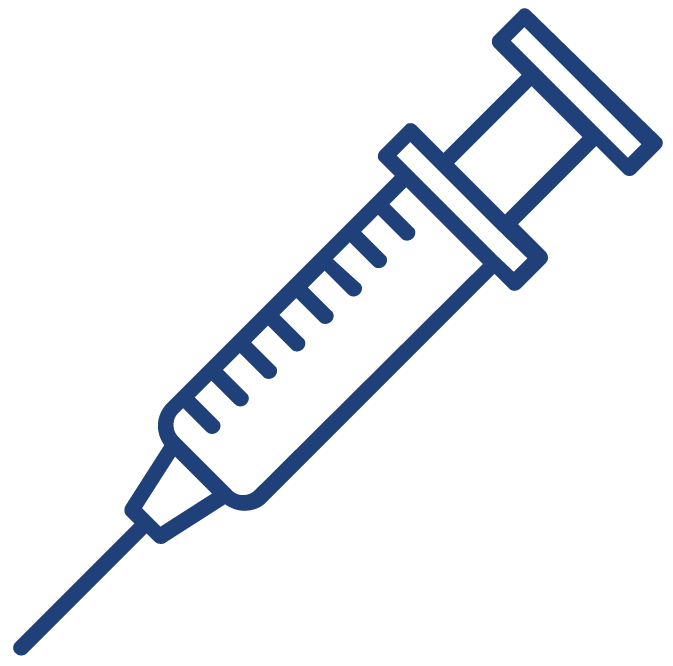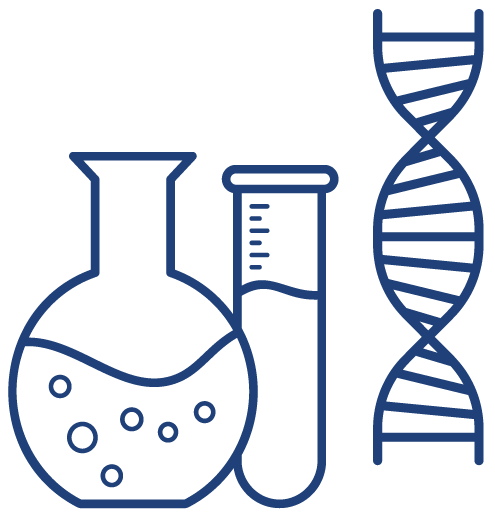Drug metabolism and pharmacokinetics (DMPK) team at Aragen-IDD is well-positioned to provide accurate data and insightful analysis of a drug’s absorption, distribution, metabolism, and excretion (ADME) properties. This is to help partners shortlist compounds with a high chance of success in later stages of drug development. By conducting the right PK & ADME studies, we help reduce failure of preclinical candidates at the clinic for human evaluation, identify compounds with optimal safety profiles and minimize drug-drug interactions (DDI) in later stages of the discovery & development process.
Capabilities
We offer a comprehensive suite of DMPK studies, including in-vitro ADME and in-vivo pharmacokinetics (PK) studies, that cover both the drug discovery and early drug development phases. Our capabilities include developing class-leading customized assays and implementing a range of protocols as specified by partners.

ADME
- Solubility in biorelevant Media
- Stability in Biorelevant Media
- Cellular Permeability
- P-gp liability
- Met-ID
Approach
- Solubility and stability in FASSIF/FeSSIF/FASSGF
- Caco2 Bidirectional permeability
- Metid in rats, rabbits, dogs, minipigs and Human Hepatocytes
Significance
- Parameters critical for assessing oral delivery
- Human dose prediction through IVIVC approach
- Selection of appropriate animal models for safety evaluations

In-Vivo PK
- Fed and fasted state Oral Bioavailablity
- Dose linearity
- Steady state kinetics
Approach
- Single dose IV and PO study in CD-1 mice and SD rats to assess F%
- Single dose IV and PO study in Non- Rodents (Rabbits) to assess F%
- Single-dose and multiple dose oral PK in mice and rats in fed and fasted state to assess dose linearity and steady state kinetics
Significance
- Influence of food on oral bioavailability
- Species [Rodent and Non-Rodent difference]
- Dose V/s Exposure will help dose selection for Tox studies

Rodent Tox
- Cellular Mechanistic
- Cellular Functional
- Relevant off-targets
In vitro ADME assays
- Oral Dose Tolerability
- GIT toxicity
- Dose Range finding
Approach:
- Single ascending oral dose toxicity study in Rats
- 14 days DRF study in male and female Wistar rats
- 28-day repeat dose toxicity study in SD rats Significance
Significance
- .Limit dose toxicity
- GIT Histopathology
- NOAEL

Non-Rodent Tox
Later translational:
- Rodent v/s Non-rodent Gl toxicity
- Non-Rodent Max dose tolerability
- Non-Rodent toxicity reversal potential
Approach
- 28-day repeat dose toxicity study in New Zealand Rabbits rabbit with 14-day reversal and Toxicokinetic
Significance – Human dose prediction based on
- Allometric scaling
- h-PK projection
- PK/PD/Efficacy data
- Safety/Tox data
Through formulation development studies on the characteristics and biological activity of a compound, we help partners make decisions on a drug’s delivery system using attributes such as solubility, self-emulsification, and dosage form. Our well-defined bioanalytical qualification process to quantitatively measure active drugs is shown below.
Our scientists are experts in driving cost-effective, reproducible and high-quality data for drug discovery and development programs. The team handles compound dispatch to data upload in 10 calendar days with more than 95% adherence to turnaround time.
Our state-of-the-art infrastructure includes automated solutions, such as ultra-performance liquid chromatography (UPLC) and time-of-flight (Tof) mass spectrometry, which enable rapid processing of bioanalytical data for fast-tracking of drug discovery projects.
Our in-vitro ADME and in-vivo pharmacokinetics (PK) studies can be accessed as a stand-alone project (i.e., fee-based or service-based model) or as part of a larger integrated drug discovery (IDD) program.
- Solubility (pION, Kinetic, Thermodynamic, FaSSIF, FeSSIF and FaSSGF
- Stability (buffer, pH, plasma etc.)
- Lipophilicity (LogP, LogD and pKa_ spectramax)
- Plasma Protein Binding across species (RED, UC and HT)
- Matrixes Protein Binding
- Blood Cell Partitioning
- PAMPA-GIT, BBB, skin
- Caco-2/MDCK, MDCK-MDR1 permeability
- ABC/SLC transporters
- Transdermal diffusion (porcine and human skin)
- Buccal permeability
- Metabolic stability (microsomes, S9 fraction, hepatocytes)
- Reactive metabolites (GSH and KCN adduct)
- CYP Inhibition (8 isoforms: cocktail and individual approaches)
- CYP induction (PXR, CAR and AHR)
- TDI/MDI /DDI
- Metabolite(s) Identification plasma, hepatocytes
Cannulation
- Jugular Vein
- Portal Vein
- Bile Duct
- Femoral Vein
- Double Cannulation
Multiple Routes of Administration
- Oral
- IV
- IP
- SC
- IM
- Intratracheal
- Sublingual
- Buccal
- Intraduodenal
- Intracolonic
- Intranasal
- Nebulization
- Inhalation
Type of Studies
- Multiple Dose
- Dose linearity
- Tissue Distribution
- Alternate Dosing
- DDI
- Fed/fast
- BBB & CSF
- Excretion
- PK/PD
- CYP Inhibition
- Pellet and Capsule
- Met id
- Infusion studies: transporters
Biological Matrices
- Blood
- CSF
- BAL
- Bile, Urine, Feces
- Organs (brain, lungs, heart, lymph nodes, salivary gland, ovary, spleen, skin, muscle, adrenals, kidney, fat tissues, thymus, tumor)
- Portal vein sampling
- Tail vein serial sampling
Species
- Rat
- Wistar
- SD
- Mice
- Swiss Albino
- BALB/c
- C57BL6
- CD1
- Hamster
- Rabbits
- Guinea Pigs
- Large Animals
- Beagle Dogs (Collaboration with external partner)
Development of bioanalytical methods to support bioavailability and pharmacokinetics studies.
- HPLC-UV and LC-MS/MS based methods
- Development of efficient extraction procedures (protein precipitation, liquid- liquid extraction, solid-phase extraction)
- Development of analytical methods in presence of different matrices

 ADME
ADME In-Vivo PK
In-Vivo PK Rodent Tox
Rodent Tox Non-Rodent Tox
Non-Rodent Tox




